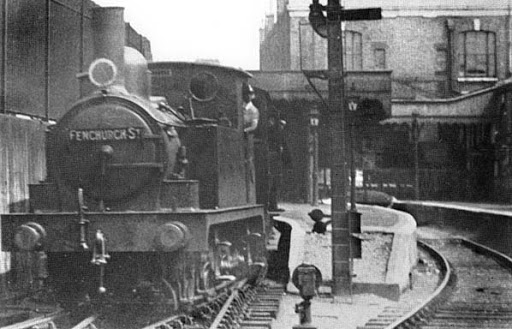I don’t approve of practical jokes. I seen nothing humorous in having your shoes set afire while you are wearing them. And dribble glasses are not only not practical they are also not funny - especially on “April Fools Day”, when every glass is a dribble glass and every shoe is a potential combustion chamber.


And it turns out that this celebration of sociopathic behavior was invented by the French, a nation without humorous inclinations since Moliere slipped on a banana peel in 1673. But the story of April Fool’s Day began over a century before that comedic-tragic event, when in 1564 King Charles IX (above) decided to follow Pope Gregory’s suggestion and begin the calendar on January rather than April. I know why the French originally celebrated New Years Day on April First, but I'm not going to tell you.
So as they had every year, thousands of these ill-informed peasants journeyed to Paris during the last week of March and on what they thought was New Year’s Eve, gathered in Bastille Square to say bonjour to 1565 and watch the guillotine drop on 1566. In unison they gleefully chanted, “Cing, quartre, trios, deux, un” and…No guillotine. No satisfying plop of a head into the basket. No Campaign corks popping. No le Anderson Cooper.
Instead of cheers and shouts of glee, mass ennui broke out among the masses. Now anyone who has experienced the Parisian version of “good manners” can imagine what came next; the locals mocked the bewildered peasants and made them feel like complete Americans,…ah, I mean, fools. But the way they did it makes the word “odd” seem inadequate.
For reasons beyond understanding the Parisians snuck up behind their confused country cousins, surreptitiously stuck a paper fish to the bumpkin’s backs and then shouted in a loud voice, “Poisson d’Avril!”, which translates as “April Fish!”, and then collapsed in raucous laughter and shouts of “tres bien.”
Why would they shout “April Fish!”? I have no idea. But, perhaps the first Parisian to label his victim an "April Fool” immediately received a mouth full of fist, while calling the victim an "April Fish” confused him just long enough so that the prankster could escape.
I have long thought that this uncharacteristic outbreak of French “humor” was actually inspired by Charles’ Italian Queen, Catherine de Medici, who was already famous throughout Europe for her gastronomical gags, such as her duck a la cyanide with a hemlock sauce. Only a Medici could see the humor in humiliating the people who handled your food.
But however it started, the Parisians knew a good time when they saw it and they sent peasants on “fool’s errands”, and tricked peasants with “fool’s tales”, until every April 1st, France reverberated with gales of laughter and shouts of “Poisson d’Avril!” Good times.
But eventually the Parisian bullies grew bored with taunting the unresponsive peasants and in 1572 they shifted their attentions to the Huguenots. But by then the tradition of humiliating people for your own amusement on the first day of April had become popular. And like Disco music and Special Federal Prosecutors, once invented some institutions have proven impossible to stop.
This holiday for the humor-impaired spread around the globe with the new calendar like a fungus, infecting and evolving a little in each afflicted nation. The Germans added the “Kick Me” sign, and a second day which they call “Taily Day”, to further enjoy the frivolity of bruised buttocks. Ahh, funny Germans.
In Portugal, today’s innocent victim is hit with flour, sometimes while it is still in the bag - the flour, not the victim. In Scotland the target is humiliatingly referred to as an “April Gawk” (?!), in England as a “Noodle” and in Canada as an “American.” I would have expected mental health professionals to call for a stop to this public insanity but evidently they are too busy setting their patients’ shoes on fire.
Not even a world war could snap the world out of this cruel insanity. In what may have been the first time a practical joke qualified as a war crime, when, on April 1, 1915. a French pilot buzzed the German trenches and dropped a huge bomb, which bounced. It was a rubber bomb.Four years later the citizens of Venice awoke on April 1, to discover their sidewalks littered with cow manure, the "gag" of a visiting Englishman, Horace de Vere Cole, with too much time on his hands and too much money in his pockets. But then what can you expect from a man who would honeymoon on April Fool's day?
Bad humor moved into the electronic age in 1957 when BBC Television News broadcast a report about the successful and bountiful Swiss harvest of spaghetti.
On April Fool's Day in 1992, National Public Radio in the United States, broadcast the announcement that Richard Nixon was coming out of retirement to run again for President, under the slogan, "I didn't do anything wrong and I won't do it again."
In 1975 the Australian Broadcasting Company carried a report that the nation was about to switch to "Metric Time". The next morning would begin at midnight but each minute would be made up of 100 mili-days and each day would consist of 20 deca-days. It is alleged that the following morning nobody in Australia showed up for work on time, but it is unclear if that was because of the April Fool's joke or merely because, being Australia, they were all still hung over, mate.Admit it; there is no defense against April Fool tomfoolery, except a preemptive strike. So button up your top button, zip up your pants, tie your shoes and look out for that cat. Load up your water gun, inflate your fart cushion and repeat after me; “Poison d’Avril, sucker!”
- 30 -










































































































